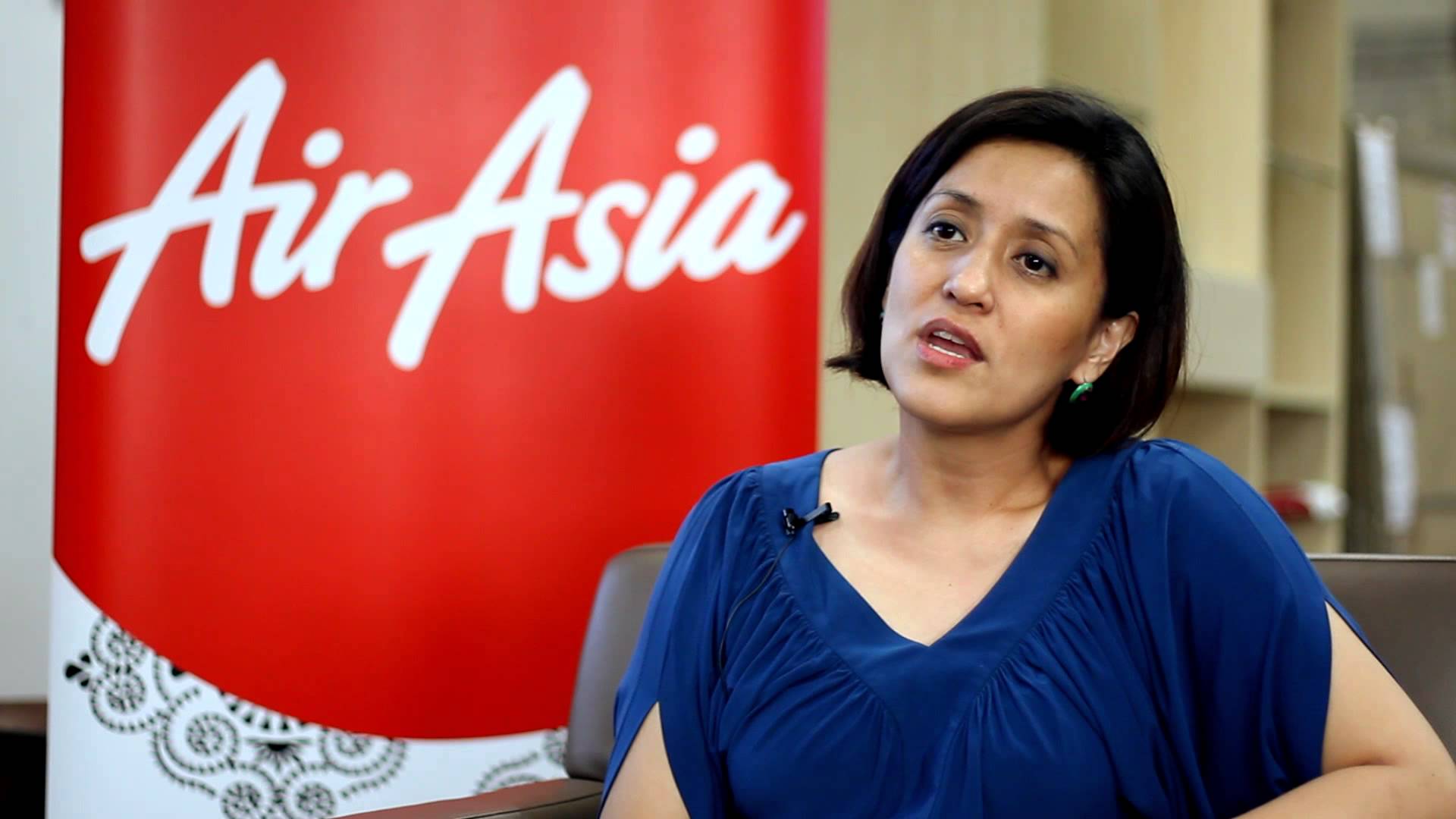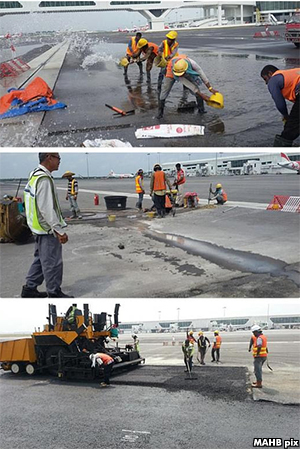KLIA2 Is Sinking, So What Are The Airport Operators Doing About It?
In an interview with Bloomberg, AirAsia Bhd. CEO Aireen Omar discusses the problems and safety concerns faced by the airline due to cracks in the taxiway and ponding in the budget terminal.
AirAsia is considering legal action against MAHB for damages caused to planes
AirAsia is considering court action against Kuala Lumpur International Airport 2 (KLIA2) operator Malaysian Airport Holdings Bhd (MAHB) after claiming some of its planes were damaged by the terminal’s poor soil conditions.
“MAHB cannot keep sweeping things under the carpet. The board and the management has to be responsible. There is no safety issue at the moment, but let’s not wait for one to happen. We at AirAsia are weighing all our legal options and taking legal case against them is not out of the question,” Tony Fernandes told reporters after describing the horrible 8 hour delay they experienced due to the airport's condition.
The airline said defects could cause flight delays, increase wear and tear on planes and pose potential safety risks and though take offs and landings aren’t affected, the carrier has asked Malaysian authorities to fix the problems before passengers get hurt.
The Transport Ministry has scheduled a meeting with AirAsia tomorrow where the airline is expected to iron out its issues with MAHB, the budget carrier boss disclosed.
Fernandes also claimed MAHB has been incompetent in ensuring its airports are up to par with the world’s best, noting that it has yet to put in place the self-check-in system at the KLIA2 for passengers despite pledging to do so six months ago.
27 JUL: AirAsia has warned airport authorities that KLIA2 is sinking, with cracks appearing in the taxiway and water forming pools that planes must drive through
According to AirAsia Bhd. CEO Aireen Omar, the terminal's shortcomings does not only cause flight delays, but also increase wear and tear on planes and even pose potential safety risks
Though take offs and landings aren’t affected, the carrier has asked Malaysian authorities to fix the problems before passengers get hurt, Chief Executive Officer Aireen Omar said in an interview in Kuala Lumpur.
Aireen added that while the budget passenger terminal's operator Malaysia Airports Holdings Bhd. (MAHB) has "done some partial resurfacing", a "permanent solution" is what the airport really needs
“The airport is still sinking,” AirAsia Bhd. Chief Executive Officer Aireen Omar said.
She added that the operator, Malaysia Airports Holdings Bhd., “has done some partial resurfacing, but what the airport actually needs is a permanent solution.”
KLIA2 began construction in 2009 and was completed in May 2014, with a capacity of 45 million passengers. Construction expenses for the budget terminal were reported to have inflated from the initial RM1.4 billion to 4 billion.
Construction of KLIA2 started in 2009 after the growth of low-cost travel, particularly by Malaysia-based AirAsia, pushed passenger traffic beyond the existing budget terminal’s capacity.At 257,000 square metres, KLIA2 can handle 45 million passengers, with the potential to expand
Most full-service carriers, including Malaysia Airlines, use the main KLIA terminal, which began operations in 1998 about 50 kilometers from Kuala Lumpur after the government relocated the capital’s main airport from suburban Subang.
Meanwhile, MABH has been implementing temporary measures to patch up the problem areas as the company works on completing a concrete slab to lay over affected areas. The Transport Ministry also confirmed that MABH is using its own funds to rectify the situation.
The airport is addressing the issue by patching and resurfacing problem areas and injecting polyurethane under the ground. A concrete slab to be completed by next April will provide a more permanent solution, Malaysia Airports said.
The Transport Ministry has set up an independent audit committee, which will submit a report on ponding issues “in due course,” the ministry told Bloomberg. Malaysia Airports, which has used its own funds to rectify the situation, “will be responsible for the findings and proposed solutions,” the ministry said in an e-mail.
The company also said that the depressions and water ponding at KLIA2 were caused by differential soil settlement in the apron and taxiway, a situation that "has has been anticipated from the start of construction"
Malaysia Airports said the depressions and ponding at klia2 were caused by differential soil settlement in the apron and taxiway, where some of the structure is built on piling and some stands on normal ground.
The settling “has been anticipated from the start of construction,” Malaysia Airports said in an e-mailed response to questions. Stakeholders such as AirAsia are updated weekly on the progress of the maintenance and are “constantly engaged on operational issues.”
However, AirAsia Group chief executive officer Tan Sri Tony Fernandes is not at all satisfied with MABH's explanation that such problems are to be expected, citing the 8-hour delay of an AirAsia flight due to the plane slipping off its safety chocks as an "expected" situation
The response from malaysia airports that this is to be expected is ridiculous.The board and management need a strong hard look at themselves
— Tony Fernandes (@tonyfernandes) July 27, 2015
Is this to be expected?8 hour delay due to plane slipping of chocks . The board has to take responsibility pic.twitter.com/X7EAt3jvft
— Tony Fernandes (@tonyfernandes) July 27, 2015
He also urged the board to speed up present remedial works in KLIA2, adding that he has been very vocal about the safety concerns in the budget terminal for a very long time
“This has got to end and the board must take responsibility,” AirAsia Group chief executive officer Tony Fernandes said.
“I have been very public about it for a long time. Most of you didn’t support me, saying the airport is great and Tony is arrogant,” he said.
AirAsia, KLIA2's biggest user, had initially refused to move to the newly-built passenger terminal due to concerns over flight operations and security
AirAsia had initially refused to move to KLIA2, claiming that the airport was plagued with defects on the taxiway and runway.
“We should never have moved before the ground was settled and fixed. The management of AirAsia and I were right,” he said.
The carrier gave in after the government said it would stop immigration and customs services at the old budget terminal. The AirAsia group of airlines flew 15.2 million passengers through klia2 in its first year of operation, accounting for 87 per cent of the terminal’s traffic, according to Malaysia Airports data.






